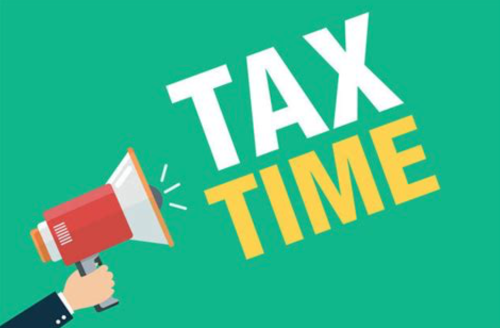Harrington Group Blog


In many ways, nonprofit and for-profit organizations are different. Payroll procedures, however, is one area where they must adhere to very similar rules and regulations. Wait…nonprofit organizations are tax-exempt, right? Well actually, this is a common misconception and although nonprofits are typically exempt from federal income taxes and certain other types of taxes, they are NOT exempt from payroll taxes.
If your nonprofit organization is growing and it becomes time to scale up and hire employees, you will need to register for employer accounts, withhold payroll taxes, file returns and remit taxes. The rules and regulations that you must follow will depend on the area(s) where you and your employee(s) are located. Let’s go over some tips to make this process easier for you:
First of all, if your organization is not yet registered – now is the time. Register with the IRS to obtain your EIN (Employer Identification Number). This is necessary before hiring any employees and is required for filing tax returns, as well as remitting federal employment taxes.
Once you have registered your organization, you will also need to register for employer accounts in any state(s) where you will be hiring employees. Ensure that you pay close attention to this process, so as not to incur any penalties. Make sure that as new employees come in, you check to make sure you are registered in that state and if not, proceed to do so.
Just like a for-profit organization, you will not have your employees fill out the federal Form W-4 and any state specific tax withholding documents.
You will also need a payroll schedule. This typically happens bi-weekly or weekly. As you run payroll, your organization is required to withhold a percentage of your employee’s paycheck. This amount is made up of Medicare Tax, Social Security Tax, the federal withholding indicated on their W-4 and any other state specific employment taxes.
Remit the tax amounts withheld from the employee, plus an additional 7.65% employer FICA (Medicare & Social Security Tax) match to the IRS. You will also need to remit any amounts withheld from employees for state taxes, as well as the associated employer taxes for that state.
Lastly, file your organizations payroll tax returns either quarterly or annually. Refer to the particular state’s employer website for detailed requirements, as they vary widely from state to state.
Now you are on your way to having employees at your nonprofit organization!

Here at Harrington Group, we pride ourselves on being a little family unit. We each play our own role and we come together as a strong team. This week, we are shining the spotlight on one of our most valuable team members, managing partner Tonetta Conner.
Tonetta’s passion to become an accountant started at the age of fifteen, when she took her first accounting course in high school. Here, she managed and prepared “mock” corporate books and developed a desire to help others manage their business operations. From here on out, she was hooked. She went on to major in Business Administration, with an emphasis in accounting at the University of California, Berkeley. Then, of course, she later became a licensed CPA.
Early in her career, Tonetta worked as a Controller for a design-build firm and then as an accountant at a Los Angeles based CPA firm. Tonetta joined the Harrington Group family in June 1997. This is when she was able to combine two of her greatest passions: accounting and the wonderful opportunity to serve nonprofit organizations. Over her many years with the firm, she has drawn upon her extensive experience to provide accounting, auditing, tax, and management advisory services to our clients. A knowledgeable professional, Tonetta has developed her expertise in working with a range of nonprofit organizations—from privately funded community organizations, mental health agencies, foster care organizations to private and charter schools. Tonetta truly believes in the focus of the firm to be “a trusted nonprofit partner.” Outside of work, she is a philanthropist herself, supporting various nonprofits through donations and contributions.
Tonetta stands strong in her leadership role at this company and beyond. Her tenacity and her captivating public speaking abilities support her in leading others. She has shared her insights as a speaker at the California CPA Education Foundation’s Nonprofit Organizations Conference and as a speaker for CompassPoint on nonprofit finance. Tonetta is often the speaker at the firm’s “NPO Symposiums” which are hosted quarterly on a variety of nonprofit topics and she provides tailored nonprofit management training to the Boards of her clients.
Tonetta is a member of the American Institute of Certified Public Accountants (AICPA) and the California Society of Certified Public Accountants (CalCPA). She also holds a Chartered Global Management Accountant (CGMA) designation from the AICPA.
Outside of her professional pursuits, Tonetta enjoys spending time with her family, attending sporting events and traveling the world. Those who know her well would say she is a “daredevil” and a “world traveler”, which are truly supported by her many traveling adventures—ziplining over the rainforest in Costa Rica, bungee jumping in Australia, driving an amphibian dune buggy through the Dominican Republic, and being up close and personal with “big game” on safari in Africa. Tonetta loves to travel the world not just for the adventure, but also for cultural enlightenment. “We live in a society made of up people from various backgrounds and cultures. Seeking to know more about other cultures is to embrace that fact.”








It’s no secret that the IRS has lots of rules about expenses and about how to log and submit them for tax purposes. Although being a nonprofit organization keeps you exempt from actually paying taxes, it does not mean you are exempt from many of their other rules – including the task of keeping travel and other expenses organized.
So, what is the best way to do this? Let’s go over some of the key points pertaining to organizing travel expenses for nonprofit organizations.
Travel Policies and Procedures
The first step to managing travel expenses for your organization is to have a set of defined travel policies and procedures. These policies and procedures should be distributed to all relevant members of the organization and reviewed before any travel outings. Ensuring that employees or volunteers are clear in what they need to provide after their trip, will make the rest of the process that much easier. Setting up a clear system is the best way to get clear and organized results, saving you time and hassle.
Travel procedures should outline:
1. A list of exactly what can be reimbursed and what is not reimbursable
2. The required documentation
3. Information about the standard mileage rate
4. An outline of estimated budget for certain expense categories (i.e. food, lodging, airfare, taxi, tips, parking ect) – based on individual trips
Accountable Plan
If you reimburse an employee or even a volunteer for travel (or for other expenses), you must do so using an “accountable plan”. This is important because if you don’t use an accountable plan, the reimbursement will be considered taxable wages and no one who is helping or working for a nonprofit wants to be taxed on their reimbursements!
An accountable plan (IRS publication 463) is defined by:
1. Expenses reimbursed are for a nonprofit purpose
2. Expenses are accounted for within “a reasonable period of time”
3. Any excess reimbursement or allowance is returned within a reasonable period of time
To account for expenses, travelers need to provide:
1. Detailed receipts which show dates or purchase, what was purchased and the vendor
2. An expense report documenting all relevant information about the trip
The Standard Mileage Rate
The IRS updates the standard mileage rate every year. The rate for 2021 is:
• 56 cents per mile “driven for business use”
• 14 cents per mile “driven in service of charitable organizations”
Here is where we find a difference between employee and volunteer reimbursement rates, which can complicate expense reporting a little further. Employees of nonprofit organizations may be reimbursed based on the business rate, as they are incurring business mileage while on the job. On the other hand, volunteers find themselves in the category of service for charitable organizations and are therefore capped at 14 cents per mile. On the upside for volunteers, they may also be reimbursed for commuting mileage, while employees may not be reimbursed for their daily commute to and from work.
Using an accountable plan to have mileage excluded from taxable income, both employees and volunteers must provide complete documentation of their trip. Details include:
1. Date(s) of travel
2. Purpose of travel relating to the business
3. The travel destination
4. Total mileage driven
5. Include all receipts upon submission
Travel Advances
Travel advances are another topic that should be outlined in an organization’s travel policies and procedures. This can be a tricky area, depending largely on the type of travel. There are a lot of nonprofit organizations who work to help youths and often take large trips where chaperons monitor groups of youths. In instances such as these, it can be too much of a financial burden to expect the chaperons to pay up front and be reimbursed (especially when it comes to feeding large groups multiple meals a day).
This is where the concept of a travel advance makes sense, given that limits and guidelines have been given ahead of the trip. It is an option to give an advance, based on a per person budget, for meals and any other misc expenses that may fall outside of the pre-paid travel fees. Any remainder at the end of the trip would be returned to the organization. You can also hand over a company credit card – although this takes a lot of trust in the designated employee(s) who will be responsible for the limit of charges going to the card.
Regardless of the method, travel advances will come up and every organization should have a policy outlining details.

The differences between nonprofit and for-profit organizations are substantial – beginning with their core missions and extending into ethics, practices and accounting methods. Nonprofit organizations exist to meet the needs of society and to do good things for people without any monetary goals. As they are not earning revenue for profit, it is easy to see why the accounting methods would differ from those of organizations who are turning profits. While the accounting practices of these two entities share the same underlying goal – to keep track of financials and provide transparent feedback - the information that must be disclosed to the government is different. Let’s take a look at some of these key differences for accounting purposes:
Income Statement VS Statement of Activities
Businesses that operate for-profit must maintain an income statement (aka a profit and loss statement) that breaks down financial information regarding revenues and expenses. This statement will indicate whether the organization has a net income or net loss during a period of time – information sought after by investors and creditors alike. On the other side of things, nonprofit organizations maintain a statement of activities (SOA). This will include revenue (from all sources, such as membership dues, grants etc) as well as expenses. The SOA will showcase a nonprofits net assets and may indicate either a surplus or a loss.
Balance Sheet VS Statement of Financial Position
Financial statements must be prepared regardless of the entity classification. The main difference here is that for-profit organizations have owners and shareholders (or some do) and nonprofits do not have owners. So, nonprofits prepare a statement of financial position which outlines the net assets of the business (assets minus liabilities). For-profits must prepare a balance sheet (typically this happens quarterly), which also outlines their net assets. This sheet includes owner’s equity or stockholder’s equity and assets minus liabilities. Similar but different!!
Income VS Contributions
As we have already outlined, for-profit organizations exist for monetary gain and they receive income differently than not-for-profit organizations. While for-profits make money through aspects of the business such as sales of merchandise, service fees and shares of stock, nonprofits also receive contributions – monetary, physical and service based. A nonprofit can receive in-kind contributions, restricted and unrestricted contributions, grants and awards, membership dues, fundraising money and money from sales or merchandise. As all contributions to a not-for-profit are put back into the business for purposes of funding their chosen philanthropic avenue, this flow of assets is not classified as “income”.
Tax Status
One of the clearest differences between for-profit and nonprofit is the tax status of the organization. Nonprofits, once approved as a 501(c)(3) by the IRS, are exempt from paying federal income taxes. State and local taxes will vary from state to state. In addition, individuals who donate to nonprofit organizations will receive a tax deduction at the end of the year. All for-profit organizations are responsible for paying income taxes at local, state and federal levels.

It’s that time of year again…spring cleaning is upon us and it’s not just an at home activity, it also applies to the workplace! Whether you are back to working in an offsite office space again or you are still in the swing of the work from home life, spring cleaning can refresh your space and boost your productivity in the process.
It is not uncommon to let papers pile up on your desk, dust to gather around your workspace and drawers to become cluttered. Once your space is messy, it can feel like such a chore to return things to harmony that the chaos is often avoided. Rather than add another task to an already long to-do list, we think, why should I clean and organize? Well, let’s talk about the “why”…
“Organizing is what you do before you do something, so that when you do it,
it is not all mixed up. “
-A.A. Milne
“For every minute spent organizing, an hour is earned.”
-Benjamin Franklin
Many successful and productive people have figured out the benefits of a clean and tidy space. The investment of time that you put into organizing is returned to you, with an added bonus. You will no longer waste time looking for a particular client folder or an important document that you printed out and thought you left in a special spot on your desk, only to have been buried by more papers or miscellaneous items. When every item in your space has a “home”, meaning it has a space, whether in a drawer or on a surface, where it belongs, this makes keeping yourself tidy much easier. Simply follow the blueprint that you’ve created and ensure all papers and items return to their home when you are done using them or at the end of each workday. Being able to find something right when you need it saves you time and energy.
In addition to saving yourself time, being tidy also allows your mind to focus on work. Whether unnoticed or noticed, our brain makes an overwhelming number of micro decisions every day. Starting from the moment we wake up. What should I wear today? What should I eat for breakfast? Should I tie my left shoe first or my right? Again, the brain is deciding, even if this goes unnoticed to our conscious mind, as our unconscious mind will take over for tasks that are very familiar (such as tying shoes, driving the same route to work, etc.). With our mind always working overtime, when it comes time to sit down and focus on a specific project, having a clear workspace with minimal distractions does wonderful things for productivity. The less clutter surrounding you, the more you can hone in on your computer screen, document, notebook or any task you happen to be working on.
If boosting your productivity and saving you time isn’t enough motivation, a clean and organized space also makes a good impression on clients and co-workers. Feeling convinced but don’t know where or how to begin? Don’t fret, we have compiled some tips for spring cleaning your workspace:
1. CLEAN
This seems pretty simple…because it is! Organizing your space will inevitably kick up a long of dust. Let’s just handle that right off the bat. Cleaning doesn’t require as much thought as organizing, so it’s a great way to get the ball rolling and feel some immediate satisfaction of results. Really go for it, pull your desk away from the wall (if applicable) and vacuum behind it. Pick up every item on your surfaces and wipe them down. Wipe the tops of any piles of books or files that may be sitting around gathering dust. GET IN THERE.
2. SCHEDULE TIMING THAT WORKS FOR YOU
Make sure that you plan this out so that it is an achievable task within your current schedule. For some, this may mean blocking off a day to get it all done in one fell swoop. For others, this may mean blocking off 30 minutes increments every day, a few days a week and so on. You know your schedule and your mental energy the best, so tailor the timing for yourself. The important part here is to schedule this task. The same way that you would schedule a zoom meeting or a workout class…and then don’t skip it! Keep yourself accountable.
3. FOCUS ON ONE AREA OR CATEGORY AT A TIME
Organizing can be overwhelming if you try to think about the entire process at once. Instead, focus your attention on one small area or one full category at a time. So, maybe start with your top drawer. Keep your focus here by taking everything out. Clean the inside of the drawer. Sort the items and toss any trash or get rid of anything you no longer need. Place everything you want to keep back into the drawer in an intentional way. BOOM, progress. As far as categories go, paperwork is one full category that may be strewn about all over your office and shoved in different drawers. You should gather all of your papers together and sort them into categories. Get rid of anything you don’t need anymore (toss or shred) and then, file the rest away! Make sure to label your file folders.
4. SATISFY YOUR SENSES
Depending on your personality type, you may find your mind fighting the process. Satisfying some of your senses may help to combat this mind chatter. Light a nice smelling candle or some incense, put on some relaxing music or even a favorite podcast. Keep a snack nearby and reward yourself every time you finish a “section”.
5. USE THE BUDDY SYSTEM
Having some outside accountability can be really helpful and motivating. Evaluate your circle of co-workers, friends or family and consider asking one or more people (who you think will actually participate) if they want to spring clean with you. They will clean their own space and you will clean your own, but you can check in with one another on progress updates and hold each other accountable for your end goals.
6. REWARD YOURSELF
A rewards-based system is a good system. Set your end goals for spring cleaning and decide on a reward for yourself upon completion. Maybe you want a laptop case, a new work bag, a new piece of art or fun knickknack for your desktop or maybe you just want to order a nice dinner and some dessert to celebrate…find something that you really love and will feel motivated to work towards.
7. HAVE A DEADLINE
Even if you are only able to carve out small increments every week to clean and organize, make sure you set a deadline during the planning process. This will help to ensure you finish the project, instead of just starting it and leaving it unfinished.
8. MAINTENANCE
Once you have achieved your end goal, AKA you are super clean and organized, keep it up! Set aside 5 minutes at the end of each workday to file papers and put items back in their “homes”. This will prevent a larger mess from piling up again and keep you organized for the long haul.
There you have it, a road map for spring cleaning that will be sure to leave you feeling refreshed, reenergized and productive. Good luck and happy organizing!!

So here we are, about one year in to most (or all) office buildings working from home. Working remotely certainly has its benefits – skipping the morning commute and evening rush hour traffic, saving gas, not having to pack your lunch and wearing sweatpants all day (to name a few). Yet, it also has many drawbacks. One of which comes in the form of loneliness. Office staff is generally used to passing by one another in the hall, having chats at the water fountain and in the lunchroom, sitting next to one another in cubicles and many other small moments that simply come down to socializing.
Without a change in environment (staying home to work, exercise, eat, relax etc. all in the same place) or opportunities for human interaction, productivity can often suffer. The brain begins to move into auto pilot after a certain amount of monotony. As a result, remote workers will begin to start their days with “ground hog day” syndrome – invoking feelings of “this again…”. This is a relatively new issue for business owners but one that should not be ignored. So, the question is, how do you keep your employees engaged with their work remotely? What strategy can be used to minimize the monotonous feeling they may be experiencing and keep their productivity, as well as overall engagement, up?
Humans are both social and playful creatures. When given the opportunity to fulfill these inherent desires, we usually come out happier and more connected. This is where remote team building activities come into play (literally). Whether these are organized during lunch time breaks, after work happy hour or small 10-minute breaks throughout an employee’s shift – it is sure to facilitate a more joyful and engaging working environment. We recommend a combination of all three! Having an open discussion board, a chatroom or an email chain where employees and managers alike can post ideas and times for group games/activities will give all staff the opportunity to pick and choose the socializing they would like to participate in. Perhaps this can even extend to pre-work exercise classes, meditation or coffee chats. The sky is the limit but the goal is team building and social interaction to break up the boring home routine that comes with remote work.
Below are some ideas for remote team building activities but know that the list is honestly endless! Creativity is key here.
Games
JackBoxGames.com
This would require a purchase of game packs from the company JackBox. They are compatible with zoom and can be played using employee’s computer screen and cell phone. These are fun online games and range in length. They can make a great lunch time activity for a small group of employees and an after work happy hour.
Online Tournaments
Employees can play 1v1 games such as chess, pool, battleship, checkers etc. Create a tournament bracket and circulate it for sign-ups.
Quiz About Each Other
A manager can put out a questionnaire to gather interesting facts about employees and put together a quiz. This can be a fun and interactive way for employees to get to know each other.
Zoom Games
Many simple games can be played over zoom groups. Pictionary, charades and bunco – just to name a few. Sign-up sheets can circulate to fill up for lunch time games (which may need to be ongoing for several lunch days in a row or may finish in one, depending on the size of the group and length of the game).
Activities
Fitness
Maybe there is someone on your team that wants to lead a dance class, a yoga class or a fitness class. This is a great opportunity to bring people together in the hours before work or after work. Again, a sign-up sheet and group discussion over what employees would be interested in would be helpful. For certain personality types, this fitness group could turn into friendly competition and a way to support each other with their fitness goals.
Costume Parties
Sounds a little like elementary school but what’s wrong with that? Perhaps a dress up day is just what your company needs to lift spirits and add a little humor. Maybe it’s crazy hair day, pajama day, 70s day – or whatever you come up with. Have employees dress up and have a lunch time costume competition. Winner gets a prize!
Coffee Chats
Groups could start off their window before clocking in with a little social coffee chat. They can read inspiring things to one another or just gossip about their lives. Some people will be more interested in the simplicity of these chat options over games or activities. It will allow them to start work at the beginning of their shift, already having the experience of social interaction.
Again, these are just a FEW ideas to get you started. The possibilities here are endless but the goal is to bring your team together, combat the loneliness of remote working and increase the happiness and productivity of at-home staff. Have fun!!

As most of us (if not all of us) know by now, filing tax returns on time is essential to avoiding penalties and additional fees. April 15th, the dreaded Tax Day, is the usual deadline. That is, unless April 15th falls on a weekend or a Holiday, in which your forms would be due on the following business day.
Coming off of a very unique and, most would say, challenging year, some of us may not be quite ready to file our tax returns. 2020 came with many surprises and the last thing we want to add to that list is a penalty from the IRS. Luckily, we all have the option to file a tax extension if we fear the current deadline. It’s fairly easy to file an extension but there are some important points to stay aware of. Here is what you need to know, in order to pull it off flawlessly.
How much extra time does a tax extension grant?
For an individual, the answer is 6 whole months. When you submit your request for an extension of time to file your tax returns, you will be assigned a new due date of October 15th (woo!). Same as the current deadline, if October 15th falls on a weekend or a Holiday, your due date will be the following business day.
For a nonprofit organization, you can choose either 3 months or 6 months.
How do you request a tax deadline extension?
For an individual filing a tax extension, the process includes submitting a single form to the IRS: Form 4868 “Application for Automatic Extension of Time To File U.S. Individual Income Tax Return. This form can be sent via mail or e-filed using an online service. As an individual, you will not have to wait for the IRS to approve your request. You will be granted an automatic extension of your tax deadline. It’s important to note that you MUST submit the form 4868 by the April 15th deadline, in order to get your extension without penalty.
For a nonprofit organization filing a tax extension, the proper form to use would be the IRS Form 8868 “Application for Extension of Time to File an Exempt Organization Return”. This form will request an automatic 3 month extension but can also be used to apply for an additional 3 month (non-automatic) extension – taking it up to a total 6 month extension. It is important to keep in mind that for nonprofit organizations, the IRS will want a “reasonable cause” for filing an extension. As 2020 was a crazy year, and many businesses/organizations were understaffed (especially those that are non-essential), it is safe to say that there is much reasonable cause floating around.
When do you have to pay your taxes?
It is very crucial to note that although filing a tax extension grants you extra time to turn in all your paperwork, it does not grant you extra time to pay your fees. If you owe the IRS money, you should still submit payments by the April 15th deadline. There is ONE little loophole here – as long as you pay 90% of your fees by the April deadline (and you filed a tax extension request on time) then you may pay your outstanding balance by the extended October 15th deadline. This will not result in any penalties or extra fees.
Either way, make sure you file your taxes by your deadline (whether April 15th or an extended deadline) in order to avoid a failure-to-file penalty fee. Even if you cannot afford to submit your payments in full by your filing deadline, don’t skip it. The failure-to-pay penalty is not as expensive as the failure-to-file penalty.
Happy Tax Season!!!

As we kick off a fresh year, Harrington Group is very excited to announce the admittance of Oswaldo Torres to the 4th partner of the company. Ozzie has been with Harrington Group since 2009, when he was brought on as a Senior Auditor. His extensive background, including work for a regional public accounting firm conducting audits of manufacturing and apparel entities, as well as providing accounting and consulting services to a vocational college in Commerce, CA, allowed him to shine in this position – ultimately earning him a promotion to manager in 2015. As manager, Ozzie has been leading audit engagements for a variety of nonprofit clients, using his expertise in financial and operational areas and in evaluating internal control systems. He has excelled, maintained admirable work ethic and does so with grace. For these reasons and more, Ozzie is the perfect person to round out the partner positions here in 2021.
As newly appointed partner, Ozzie will be bringing a fresh perspective to this role. A few of Ozzie’s many strengths include taking initiative and a drive for continuous learning. Over his career with HG, he has initiated research on new and emerging accounting and audit topics. For example, Ozzie researched the new revenue recognition standards and did in-house training on the topic. In addition, as the 2020 Pandemic hit, he researched funding sources available for our nonprofit clients because he wanted them to have information on accessing the Payment Protection Program funds, so they may continue to provide essential services and not have to worry about financial limitations. He also plays a big brother type roll here in our Harrington Group family, as he mentors junior staff, encourages them to perform their best and advises them in the same way that he would advise his own siblings. Through this mentorship role, Ozzie takes pride in his ability to connect with junior staff, allowing them to feel comfortable expressing both their career aspirations and reservations. He can ultimately relay this information to the rest of the partners, so that the HG family as a whole can continue to be successful today, tomorrow and in the foreseeable future.
Let’s get to know Oswaldo Torres a little better – here are some insights into his accomplishments, his interests and into what makes him the Ozzie we know and love!
• Ozzie’s favorite part of working for HG is “working with talented colleagues who enjoy seeing our clients succeed in making positive differences in our communities.”
• When asked his favorite part of accounting, Ozzie responded – “I enjoy the logic and stories that numbers communicate. In addition, meeting new people is also an enjoyment. These are the reasons why I chose auditing as my career path.”
• When asked his feelings on ending a challenging year with admittance into partnership, Ozzie’s heartfelt answer was – “Bittersweet! A lot of profound changes have happened in the world, like the pandemic and civil unrest, and within HG, the sudden passing of one of our dearest colleagues Vilitati Bikai.”
• Outside of his professional pursuits, Ozzie enjoys attending various sporting events, coaching his son’s little league teams, venturing out to new cycling trails and spending time with his friends and family.
• Ozzie is a Certified Public Accountant and a member of the American Institute of Certified Public Accountants
• He graduated from California State University with a Bachelor’s degree in Business Administration
All in all, we are THRILLED to have Ozzie in a leadership role here at Harrington Group. He has always brought many strengths to the table and he continues to push our company and all of our employees to their best. From all of us here in the HG family we say…
CONGRATS OZZIE!!








It’s that time of year again…you guessed it; tax season is upon us. We may still be a few months away from deadlines but if you’ve ever heard the phrase “on time is late and early is on time”, well that applies to taxes as much as anything. The sooner you can send your (hopefully organized) tax documents, expense reports and receipts over to your accountant…the happier your accountant will be! Plus, you’re setting yourself up for success, getting the work out of the way and won’t suffer any delays.
We’re sure you’re all seasoned vets in tax prep by now but just in case you need a little refresher, we have your back. Start gathering the following line items to get the ball rolling on your taxes because the sooner that you start, the sooner you’ll be done and won’t have to worry about them again until next season!
• Do you have a nonprofit organization? If so, your first step is to determine if you even need to file at all! Nonprofits that have less than $25,000 in gross receipts are not required to file an annual tax return. Instead, you will simply file the form 990-N.
• Did your organization hire any vendors throughout the year who require a 1099 form? This would include LLCs, S Corps or C Corps but not Corporations. Make sure to request W9s from the appropriate vendors right at the beginning of the year, so that 1099s may be filed in a timely manner!
• Do you have your expenses organized? Are you using a secure cloud-based system, easily accessible by your accountant? Are your categories separated and have you made the necessary notes? Your accountant will need a clear breakdown of your expenses.
• Along with the organized expense breakdown, do you have the receipts to go along with this information? Are they clean and categorized and clear? Or are they crumbled in a ball, full of coffee/food stains and in disarray? Spend a little time separating these out into a system that is easy for your accountant to understand.
• If you are a nonprofit organization, do you have all of your donor receipts and a breakdown of any donations that you received throughout the year? Gather it…and make it organized!
There you go! If you can sort out all of these details in a timely manner and send them off to your accountant, you will be well on your way! Additional tips for a happy accountant include cookies, treats, snacks…you get the idea :)
Happy Tax Season!

Here at Harrington Group, we pride ourselves on being one big happy family. We respect each other, work well together and year after year, we bond. Part of this bonding is our annual holiday party, a tradition of celebration for a successful year and a quick break before we embark into another year of accounting. This year has obviously looked quite different than years passed, as we have all spent most of our time out of the office, away from one another and adjusting to these socially distant changes. Part of adapting to these changes meant re-evaluating our approach to our annual holiday party. We did just that!
Enter...Zoom. Saving the day (again). Zoom allowed us to gather, without actually gathering. Each of our staff received a goodie basket to their homes, which included all the materials to make an epic gingerbread house. Also included were some additional treats, to detour anyone from trying to eat their gingerbread house in the process (kidding but there were treats). We ate together, drank together, laughed together and we did this very holiday themed activity together. Although our interactions were through a screen, it did not take away from our holiday joy or our company bonding. We even did our annual spinning of the wheel, where staff have a chance to win some fun bonuses!
As 2020 comes to a close, we have taken a look back to recognize that it was a challenging year. In this reflection, we are also grateful to say that we have not lost our connection as a strong family unit, we have not lost our connection to our clients and as a society, we have not lost connection to each other. As challenges come along in life and we face them head on, it only makes us stronger and more inventive. We are thankful for these challenges, the chance to grow and for our continued support of one another. Our annual holiday (Zoom) party was a chance us to express that to one another and we are headed into 2021 full force!





| Free forum by Nabble | Edit this page |

